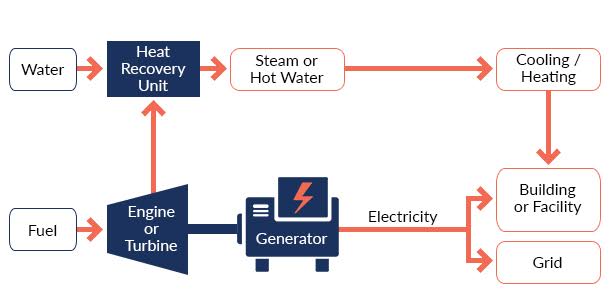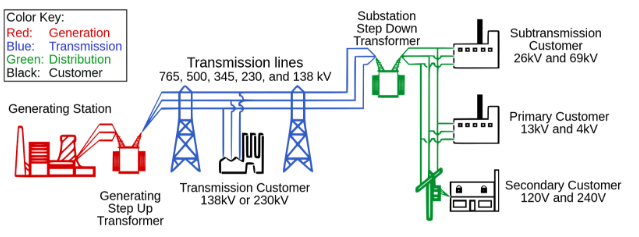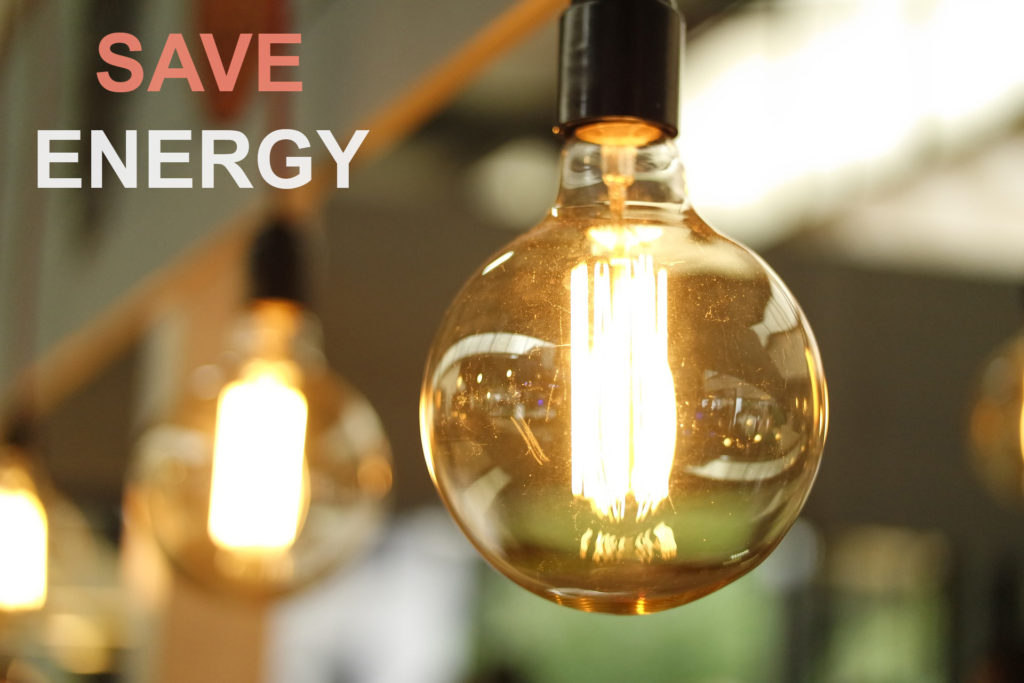Combined heat and power (CHP) is the highly efficient, combined process integrating the production of usable heat and power. We’ve written blogs about how the process works, and the positives of using the system for your business, so have a look at these for more information!
Generate your own electricity
By generating your own electricity, your business will reduce its demand from the National Grid. A fundamental requirement for the CHP system to be worth installing, is that the need for heat and power is large enough; if not, it is not worth the investment. The amount of heat needs to be constant throughout both the day and year, as if the system is turned down, the efficiency of the operation is reduced. If your premises requires enough energy, the CHP system is a great way to save money after an initial investment.
CHP is reliable; by producing combined heat and power, the units generate these for your site continuously and won’t leave you in the lurch. It also means you know the cost of your electricity at all times. Electricity, oil and gas prices all fluctuate hourly; a significant expense which can vary if your business uses a large amount of energy. Producing your own energy cuts the costs, and allows you to know the exact costs, which will help assess your finance instead of using estimates based on previous years use which don’t take into account your year on year growth or new market prices.

CHP has huge cost benefits for a business; a conventional power station wastes generates the electricity and wastes the heat, and although they generate 41% of the world’s electricity, they have the lowest range of efficiency at 35-38%. CHP has an efficiency rating of over 80% as both the heat and electricity are captured and used on nearby sites, the products from CHP can also be used in other ways; to heat water for example, in order to save money on hot water being brought to the property.
But what are the savings for using CHP? Typically, operators save around 20% on their energy bill and can save up to 30% on their carbon emissions. The Climate Change Levy is a tax placed on energy delivered to non-domestic customers; it’s aim is to provide an incentive to be energy efficient and reduce carbon emissions in the process. A business is required to pay the rate on electricity, gas and solid fuels; these are listed on your energy bill so if you’re one of the sectors required to pay them, you can view them here. Fuels that are exempt from paying from the main rates are those that are “supplied to or from certain combined heat and power schemes registered under the CHP quality assurance (CHPQA) programme.”
At every stage of the process in transporting energy, electricity losses occur. This begins with the step up transformers which connect the power plants to the transmission system which transports the energy, and goes right through the system encountering losses until it reaches the customer. On US grids, these losses rangr from 6-10% on moth grids, this figure increases as power lines become heavily loaded. Due to the CHP system being close to the area they provide heat and power to, these losses don’t occur, and all energy and heat produced benefits the consumer.

Establish efficient energy practices
Before taking simple steps to lowering your energy consumption to become more energy efficient it’s important to ask yourself a few questions about your current consumption.
- Are you leaving the lights on in the office when it’s unoccupied?
- Is the heating on high during the winter and air con on high during the summer?
- Are you doing anything to lower the water consumption in terms of modifications to taps, toilets etc.?
There are many small changes you can make that will lower your consumption significantly. Replacing light bulbs with CFL (energy saving) bulbs will significantly reduce your bill; electric lighting or placing lighting in rooms that aren’t constantly in use with motion sensitive lighting, such as bathrooms. Desktop computers and laptops should be turned off at the end of the day; those left on standby are still using electricity, this includes any printers, vending machines etc. which aren’t in use over weekends and holidays.
A programmable thermostat has the capability to adjust the temperature of the office when no one is working; meaning you’re not paying to heat or cool an empty office! It’s well worth keeping an eye on your temperature levels; by lowering your usual temperature by only one degree during winter and one degree higher during summer; you can reduce the power it uses by up to 10%.
In our last blog, we spoke about how to reduce water bills; from water efficiency devices to checking you have the correct meter size and the correct charges on the bill.
These all seem little changes to make, however together can make a huge difference to your business’ energy consumption. Beauty product manufacturer Faith in Nature took a resource efficiency audit and discovered areas they could reduce their energy, water and materials-use to become more efficient. In doing so, CEO Rivka Rose told Business Zone online that additional to achieving their environmental goals, they have saved more than £23,000.
To really see what can be done to reduce energy costs in your business over and above the tips we’ve given you, an energy audit would help to recognise key areas of your business which can be changed in order to reduce your energy bill. If you’d like to speak to one of our energy advisers about an audit, or to discuss the value CHP could have for your business, please get in touch!

